Fibonacci Heap: Efficient Priority Queue Operations
A fibonacci heap is a data structure that consists of a collection of trees which follow min heap or max heap property. We have already discussed min heap and max heap property in the Heap Data Structure article. These two properties are the characteristics of the trees present on a fibonacci heap.
In a fibonacci heap, a node can have more than two children or no children at all. Also, it has more efficient heap operations than that supported by the binomial and binary heaps.
The fibonacci heap is called a fibonacci heap because the trees are constructed in a way such that a tree of order n has at least Fn+2 nodes in it, where Fn+2 is the (n + 2)th Fibonacci number.
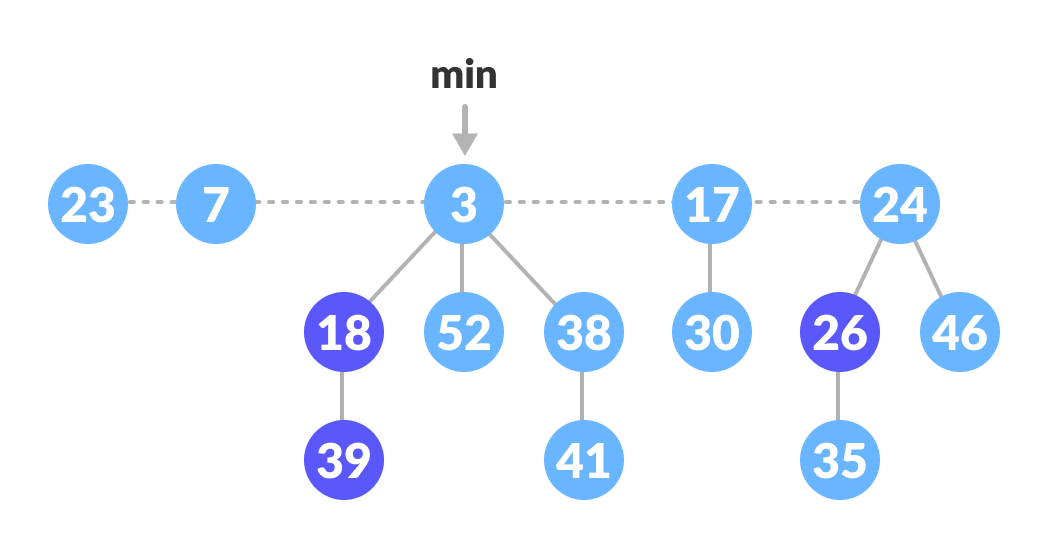
Fibonacci Heap
Properties of a Fibonacci Heap
Important properties of a Fibonacci heap are:
- It is a set of min heap-ordered trees. (i.e. The parent is always smaller than the children.)
- A pointer is maintained at the minimum element node.
- It consists of a set of marked nodes. (Decrease key operation)
- The trees within a Fibonacci heap are unordered but rooted.
Memory Representation of the Nodes in a Fibonacci Heap
The roots of all the trees are linked together for faster access. The child nodes of a parent node are connected to each other through a circular doubly linked list as shown below.
There are two main advantages of using a circular doubly linked list.
- Deleting a node from the tree takes
O(1)time. - The concatenation of two such lists takes
O(1)time.
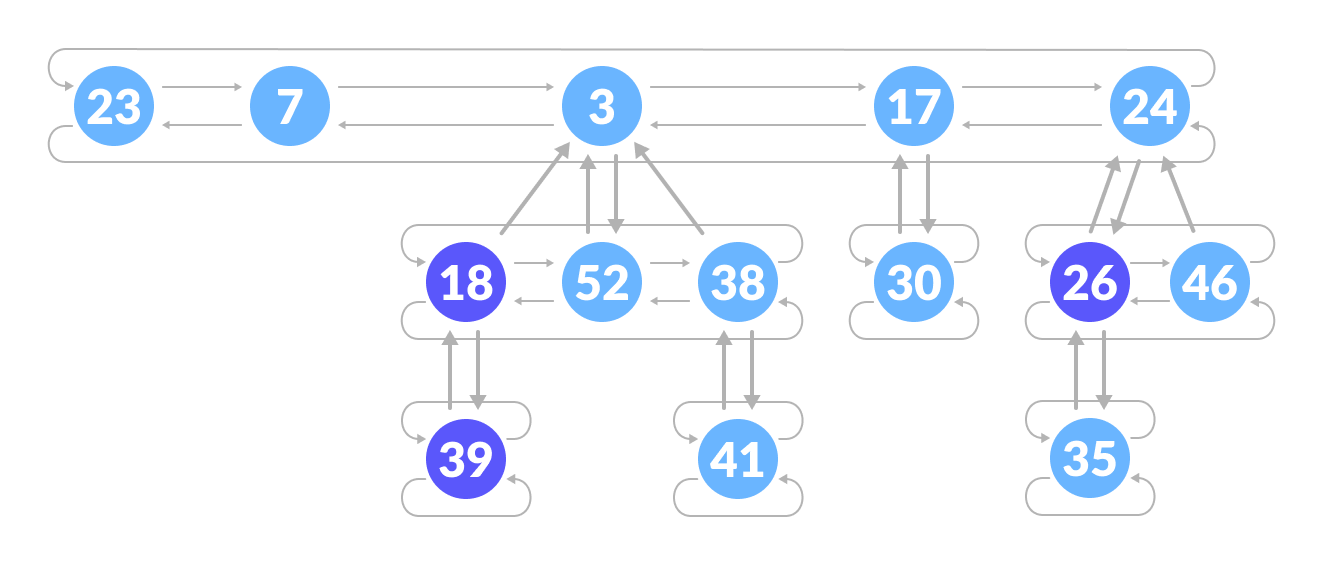
Fibonacci Heap Structure
Operations on a Fibonacci Heap
Insertion
Algorithm
insert(H, x)
degree[x] = 0
p[x] = NIL
child[x] = NIL
left[x] = x
right[x] = x
mark[x] = FALSE
concatenate the root list containing x with root list H
if min[H] == NIL or key[x] < key[min[H]]
then min[H] = x
n[H] = n[H] + 1Inserting a node into an already existing heap follows the steps below.
- Create a new node for the element.
- Check if the heap is empty.
- If the heap is empty, set the new node as a root node and mark it min.
- Else, insert the node into the root list and update min.
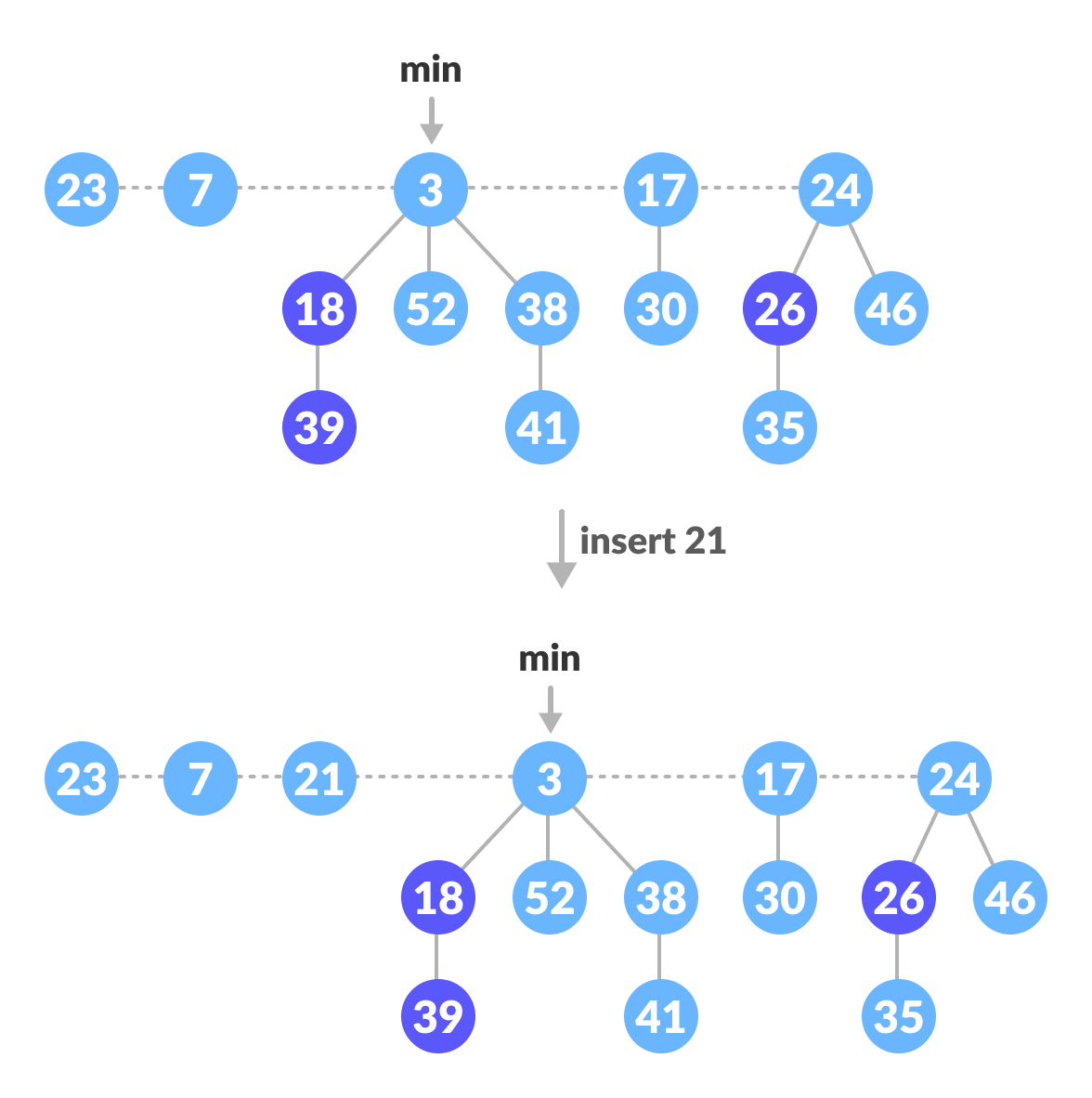
Insertion Example
Find Min
The minimum element is always given by the min pointer.
Union
Union of two fibonacci heaps consists of following steps.
- Concatenate the roots of both the heaps.
- Update min by selecting a minimum key from the new root lists.
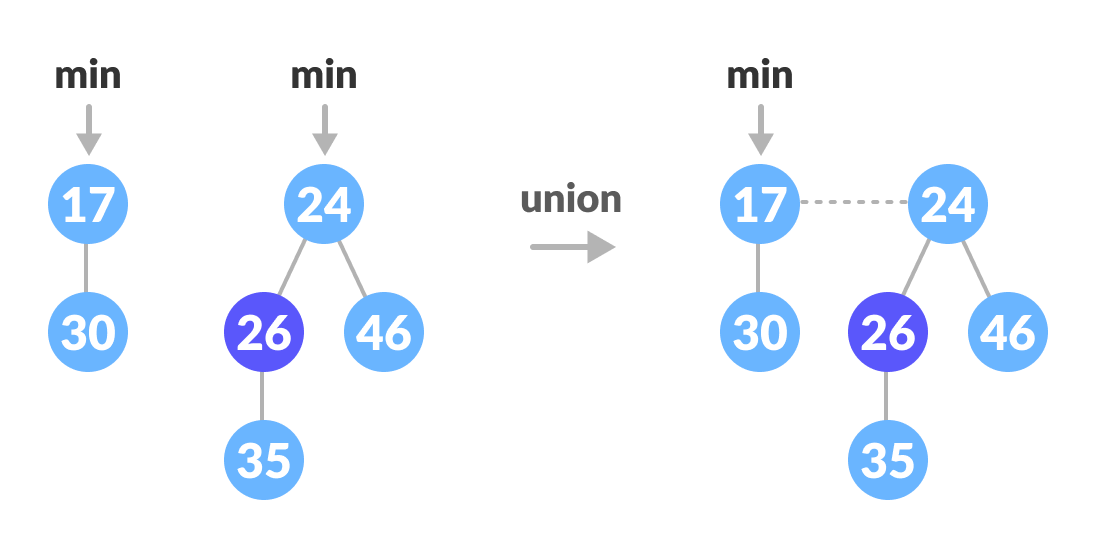
Union of two heaps
Extract Min
It is the most important operation on a fibonacci heap. In this operation, the node with minimum value is removed from the heap and the tree is re-adjusted.
The following steps are followed:
- Delete the min node.
- Set the min-pointer to the next root in the root list.
- Create an array of size equal to the maximum degree of the trees in the heap before deletion.
- Do the following (steps 5-7) until there are no multiple roots with the same degree.
- Map the degree of current root (min-pointer) to the degree in the array.
- Map the degree of next root to the degree in array.
- If there are more than two mappings for the same degree, then apply union operation to those roots such that the min-heap property is maintained (i.e. the minimum is at the root).
An implementation of the above steps can be understood in the example below.
- We will perform an extract-min operation on the heap below.
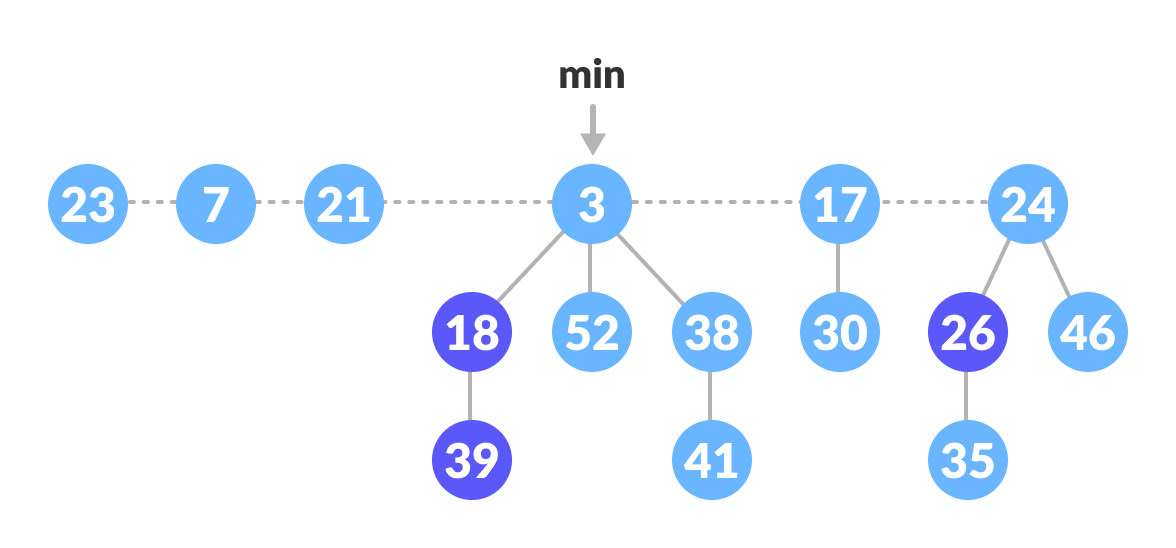 Fibonacci Heap
Fibonacci Heap - Delete the min node, add all its child nodes to the root list and set the min-pointer to the next root in the root list.
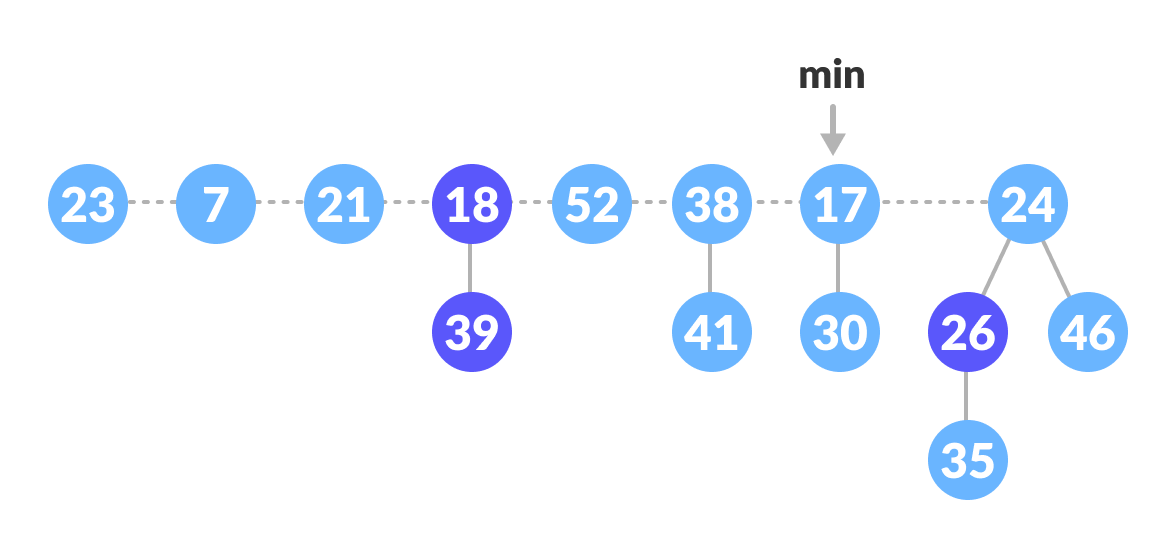 Delete the min node
Delete the min node - The maximum degree in the tree is 3. Create an array of size 4 and map degree of the next roots with the array.
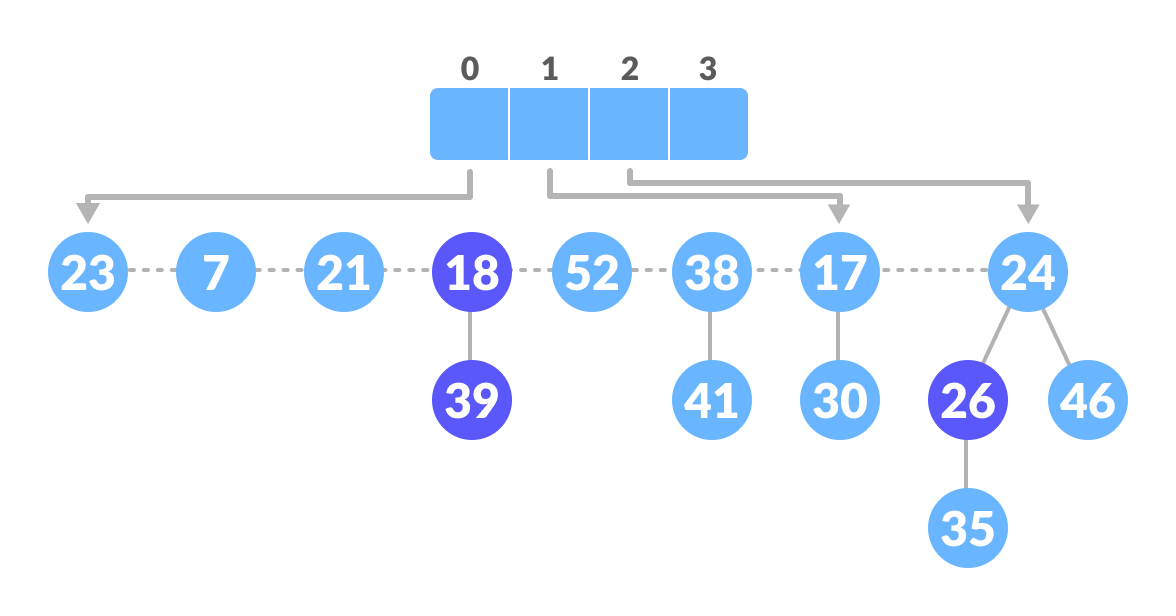 Create an array
Create an array - Here, 23 and 7 have the same degrees, so unite them.
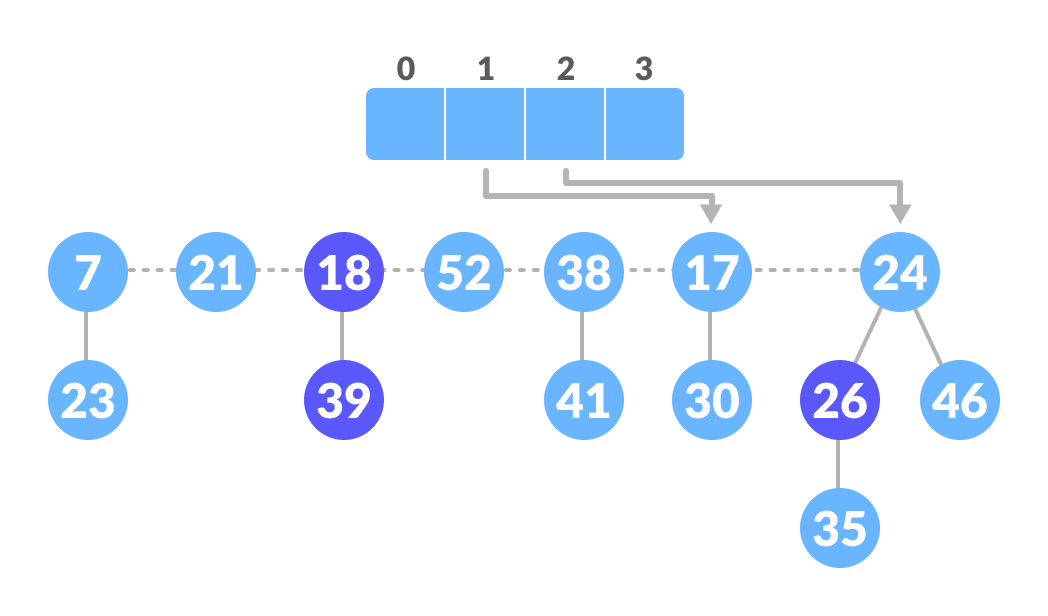 Unite those having the same degrees
Unite those having the same degrees - Again, 7 and 17 have the same degrees, so unite them as well.
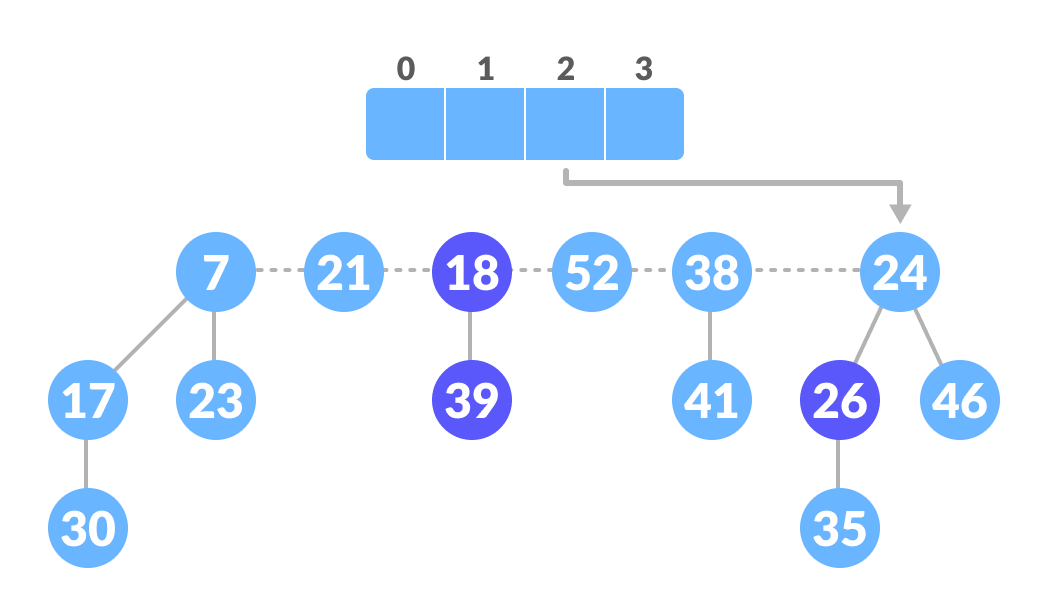 Unite those having the same degrees
Unite those having the same degrees - Again 7 and 24 have the same degree, so unite them.
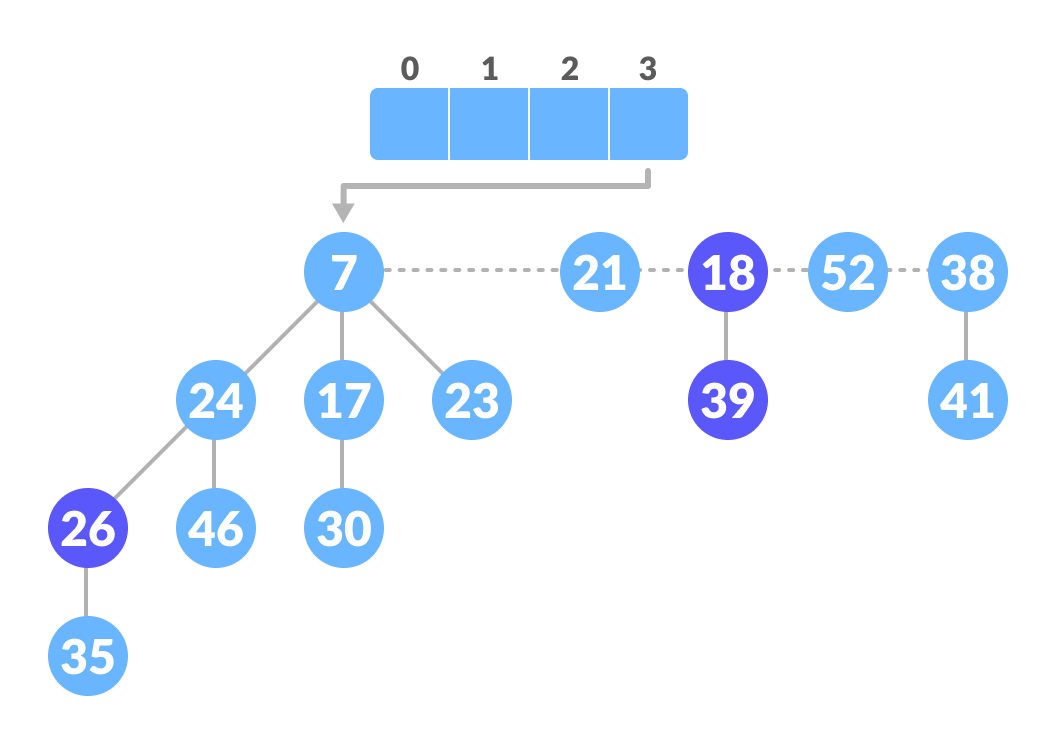 Unite those having the same degrees
Unite those having the same degrees - Map the next nodes.
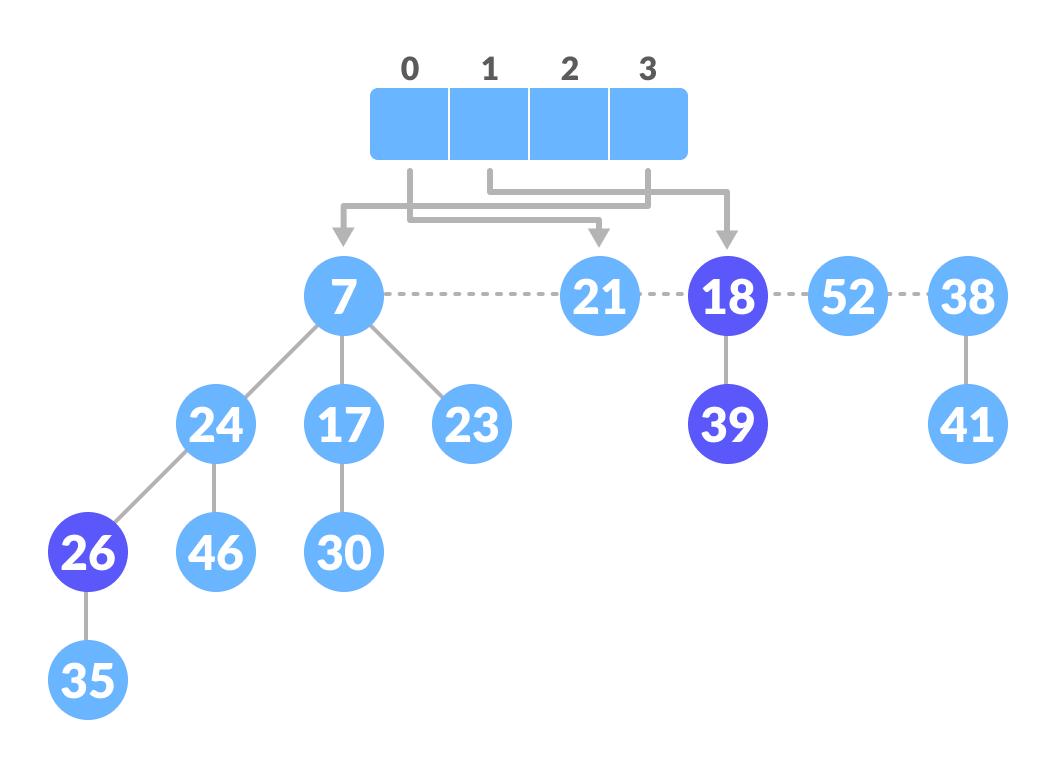 Map the remaining nodes
Map the remaining nodes - Again, 52 and 21 have the same degree, so unite them
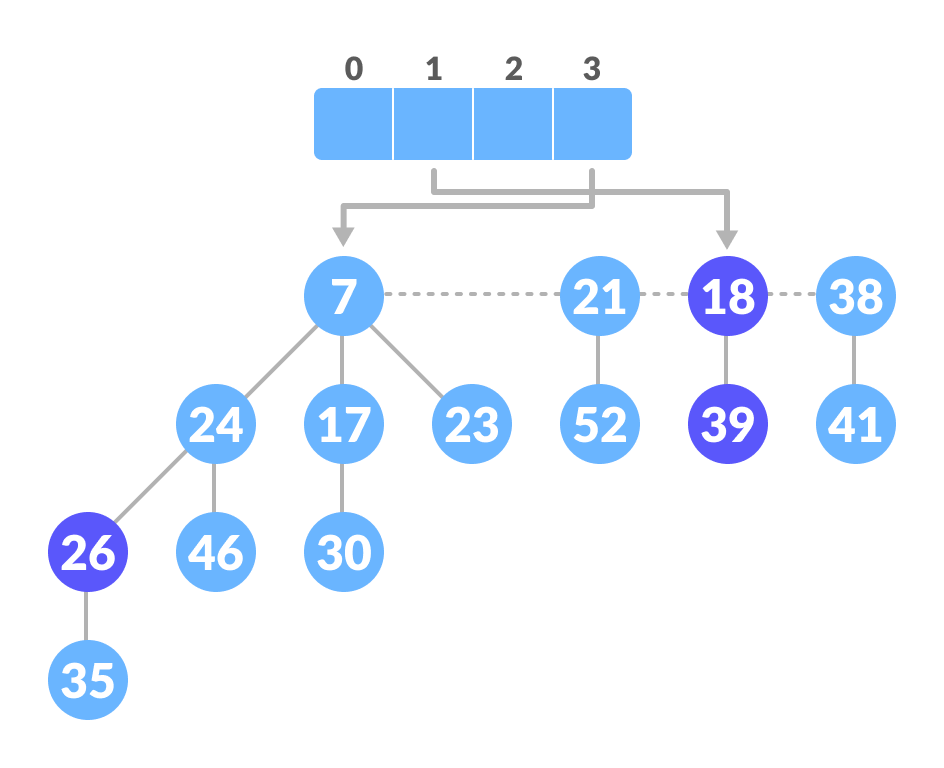 Unite those having the same degrees
Unite those having the same degrees - Similarly, unite 21 and 18.
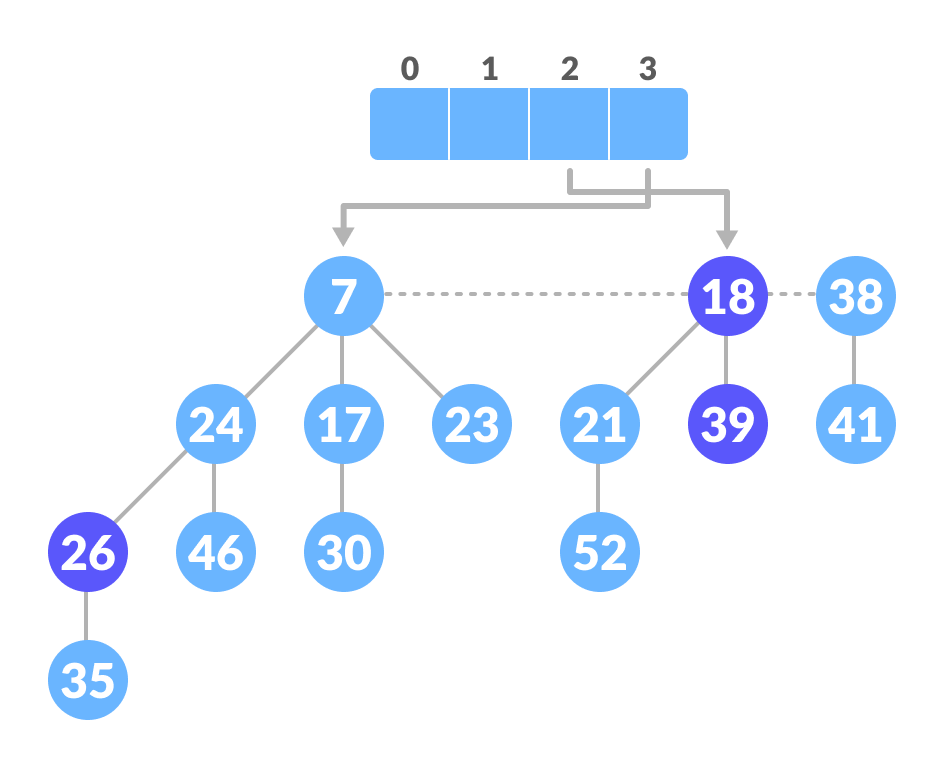 Unite those having the same degrees
Unite those having the same degrees - Map the remaining root.
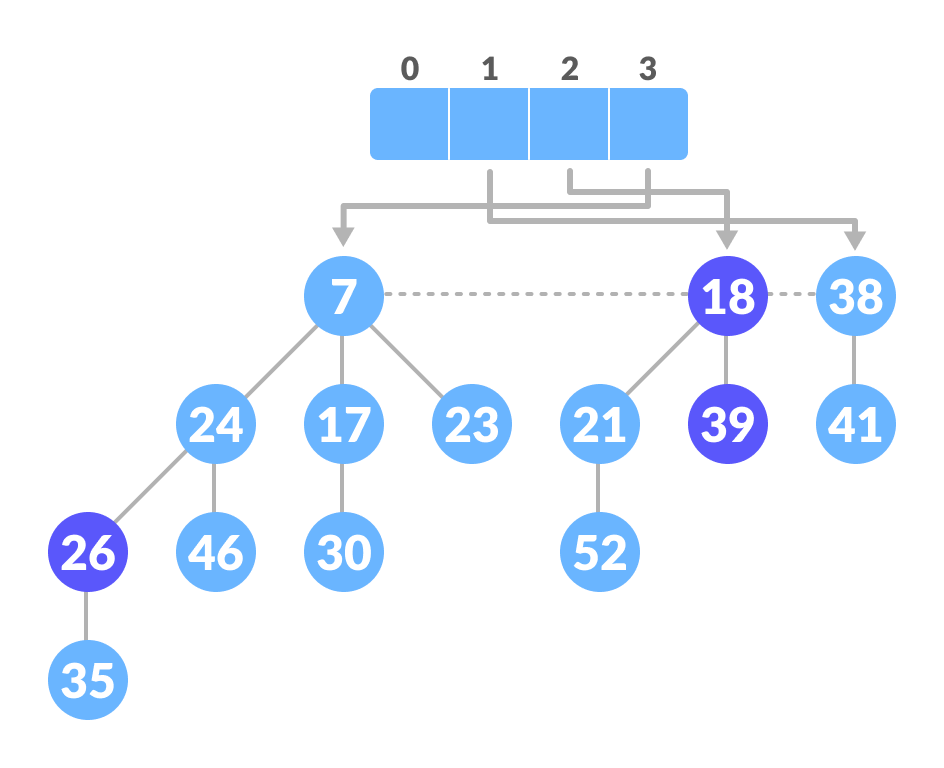 Map the remaining nodes
Map the remaining nodes - The final heap is.
 Final fibonacci heap
Final fibonacci heap
Decreasing a Key and Deleting a Node
These are the most important operations which are discussed in Decrease Key and Delete Node Operations.
Python, Java and C/C++ Examples
Python
Java
C
C++
# Fibonacci Heap in python
import math
# Creating fibonacci tree
class FibonacciTree:
def __init__(self, value):
self.value = value
self.child = []
self.order = 0
# Adding tree at the end of the tree
def add_at_end(self, t):
self.child.append(t)
self.order = self.order + 1
# Creating Fibonacci heap
class FibonacciHeap:
def __init__(self):
self.trees = []
self.least = None
self.count = 0
# Insert a node
def insert_node(self, value):
new_tree = FibonacciTree(value)
self.trees.append(new_tree)
if (self.least is None or value < self.least.value):
self.least = new_tree
self.count = self.count + 1
# Get minimum value
def get_min(self):
if self.least is None:
return None
return self.least.value
# Extract the minimum value
def extract_min(self):
smallest = self.least
if smallest is not None:
for child in smallest.child:
self.trees.append(child)
self.trees.remove(smallest)
if self.trees == []:
self.least = None
else:
self.least = self.trees[0]
self.consolidate()
self.count = self.count - 1
return smallest.value
# Consolidate the tree
def consolidate(self):
aux = (floor_log(self.count) + 1) * [None]
while self.trees != []:
x = self.trees[0]
order = x.order
self.trees.remove(x)
while aux[order] is not None:
y = aux[order]
if x.value > y.value:
x, y = y, x
x.add_at_end(y)
aux[order] = None
order = order + 1
aux[order] = x
self.least = None
for k in aux:
if k is not None:
self.trees.append(k)
if (self.least is None
or k.value < self.least.value):
self.least = k
def floor_log(x):
return math.frexp(x)[1] - 1
fibonacci_heap = FibonacciHeap()
fibonacci_heap.insert_node(7)
fibonacci_heap.insert_node(3)
fibonacci_heap.insert_node(17)
fibonacci_heap.insert_node(24)
print('the minimum value of the fibonacci heap: {}'.format(fibonacci_heap.get_min()))
print('the minimum value removed: {}'.format(fibonacci_heap.extract_min()))Complexities
| Insertion | O(1) |
| Find Min | O(1) |
| Union | O(1) |
| Extract Min | O(log n) |
| Decrease Key | O(1) |
| Delete Node | O(log n) |
Fibonacci Heap Applications
- To improve the asymptotic running time of Dijkstra's algorithm.
- This blog post was originally published at:https://www.programiz.com/
